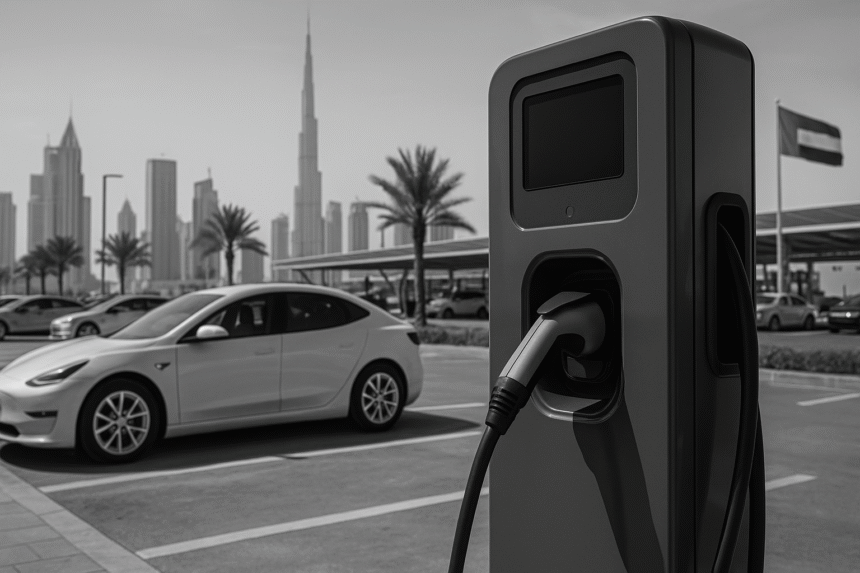Charging Ahead: Why Electric Vehicle Infrastructure Demand Is Growing in the UAE
The electric vehicle (EV) market is gaining momentum across the globe, and the UAE is no exception. With an ambitious vision for sustainability and innovation, the country is investing heavily in clean mobility. This growth has triggered a sharp increase in electric vehicle infrastructure demand, particularly in the public and commercial sectors.
For CEOs and decision-makers in infrastructure, real estate, energy, and technology, understanding this trend is not just informative—it’s actionable.
The Surge in UAE EV Adoption
The UAE government has set bold sustainability goals under Vision 2030, and electric vehicles are a major part of the equation. Dubai aims for 42,000 electric cars on its roads by 2030. Government incentives, such as free parking, toll exemptions, and reduced registration fees, are pushing adoption forward.
Some key drivers of demand include:
- Government fleet electrification initiatives
- Private sector investment in EV logistics and last-mile delivery
- High-income consumers switching to premium EV models
But as more EVs hit the roads, the demand for supporting infrastructure grows even faster.
Where the Demand Is Coming From
1. Government and Municipal Projects
Authorities are adding EV chargers in public spaces, airports, metro stations, and government buildings. The Dubai Electricity and Water Authority (DEWA) has already installed over 370 “Green Chargers” across Dubai, with more underway.
2. Real Estate and Hospitality
Developers of malls, hotels, and residential towers are integrating EV charging stations to future-proof their properties and meet tenant expectations.
3. Logistics and Commercial Fleets
Fleet operators transitioning to EVs are investing in depot charging solutions, smart load management systems, and service agreements to support operations.
4. Private Sector Workplaces
More companies are adding EV charging points in office buildings to accommodate eco-conscious employees and support ESG policies.
Infrastructure Gaps Slowing Expansion
Despite this rapid growth, the infrastructure still faces some gaps that present both risk and opportunity:
- Charger availability in non-urban areas is still limited
- Grid capacity upgrades are needed for high-speed chargers
- Coordination between DEWA, RTA, and municipalities can slow project approvals
- Supplier capacity constraints delay installations during peak procurement periods
These pain points open the door for agile private sector players to provide value-added solutions.
Future Forecasts: What to Expect Next
According to Frost & Sullivan, the UAE’s EV charger market is projected to grow at a compound annual growth rate (CAGR) of over 25% in the next five years. Government procurement will continue to lead, especially in:
- Public tender initiatives related to EV charging network expansion
- Smart city programs with integrated EV services
- New building regulations that mandate EV infrastructure in parking structures
Emerging trends include:
- AC vs. DC charger split: more demand for ultra-fast DC chargers
- Smart charging and load balancing becoming standard
- Cloud-based charger management platforms offered as SaaS
Strategic Considerations for B2B Stakeholders
If you’re involved in infrastructure, utilities, or technology procurement, here are steps to align with this growth:
1. Partner with Certified Suppliers
DEWA has an approved list of EV charger vendors. Partnering with a certified supplier ensures compliance and smoother project timelines.
2. Design Scalable Networks
Plan for future EV load by integrating chargers into your electrical infrastructure, allowing for scalable upgrades.
3. Evaluate Total Cost of Ownership
Beyond hardware, consider maintenance, software, training, and backend integration with energy management systems.
4. Monitor Regulations and Incentives
Stay updated with DEWA’s infrastructure roadmap, RTA coordination rules, and real estate mandates.
5. Bundle EV with ESG and Brand Value
Publicly communicating EV infrastructure plans can position your organization as a sustainability leader.
Conclusion: Infrastructure Is the New Advantage
The growing electric vehicle infrastructure demand in the UAE isn’t just a trend—it’s a shift. Companies that act early will be well-positioned to capitalize on incentives, meet regulatory expectations, and serve the next generation of energy-conscious consumers.
Smart procurement, future-ready design, and strong partnerships with EV charging vendors will separate leaders from laggards.
Now is the time to charge ahead.



Leave a Reply